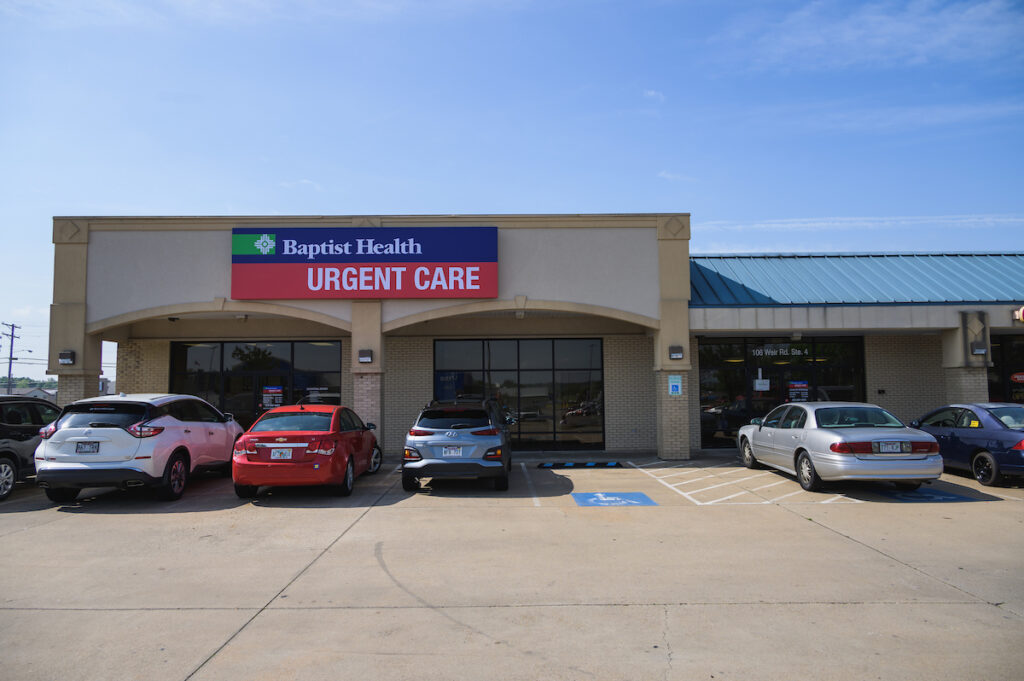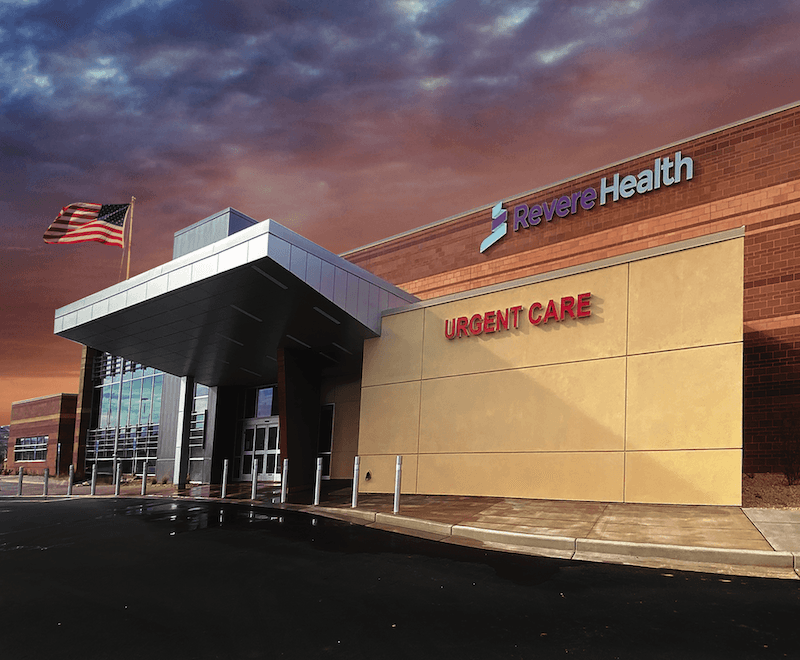Top Tips for Picking the Right Clinic for Your Urgent Care Requirements
Top Tips for Picking the Right Clinic for Your Urgent Care Requirements
Blog Article
The Significance of Urgent Care Centers in Connecting the Gap Between Primary Care and Emergency Services
Urgent care centers have actually become an essential component of the health care landscape, successfully dealing with the crucial need for prompt medical focus without turning to emergency services. By supplying look after non-life-threatening problems, these facilities assist to alleviate the problem on emergency situation spaces and enhance client access to prompt treatment. Their prolonged hours and diverse solutions accommodate a growing population seeking options to standard health care. Nonetheless, the developing role of immediate treatment centers increases crucial questions regarding their combination within the more comprehensive health care system and the implications for individual outcomes and resource allowance.
Review of Urgent Treatment Centers
Immediate care centers have come to be a crucial element of the healthcare distribution system, providing accessible medical solutions for non-life-threatening problems. These facilities usually run outdoors conventional office hours, offering clients an option to emergency areas and medical care setups. People seeking urgent care often present with problems such as minor injuries, infections, or illnesses that require prompt attention however do not position an immediate threat to life or arm or leg.
Urgent care centers are staffed by a variety of medical care specialists, including physicians, nurse practitioners, and doctor assistants, that are furnished to diagnose and deal with numerous clinical concerns. They typically feature analysis tools such as X-ray makers and lab solutions, allowing them to offer thorough care on-site.
The establishment of urgent care facilities has been influenced by the boosting need for timely clinical solutions in a hectic culture, where people might battle to protect consultations with medical care carriers. Because of this, these centers intend to relieve congestion in emergency divisions, boosting total medical care performance. In addition, immediate treatment facilities usually offer as a bridge in between medical care and emergency situation services, making sure that individuals get proper care tailored to their particular medical needs.

Benefits of Urgent Care Solutions
Accessing prompt treatment is a significant advantage of immediate treatment solutions. These centers offer instant focus for non-life-threatening problems, efficiently lowering delay times compared to conventional emergency situation divisions. People looking for take care of minor injuries, illnesses, or urgent health and wellness worries can get treatment without the lengthy hold-ups typically associated with medical facility visits.
An additional trick advantage is the prolonged hours of procedure. Lots of immediate care facilities are open evenings and weekends, accommodating patients who may not have the ability to see their medical care copyright throughout typical workplace hours. This adaptability makes immediate care an available option for those with busy schedules or abrupt wellness concerns.
Additionally, immediate care centers often offer a vast array of solutions, consisting of analysis testing, X-rays, and fundamental laboratory solutions. This comprehensive approach permits for quick diagnosis and therapy, enhancing person contentment.
Furthermore, urgent treatment facilities are typically extra economical than emergency clinic, making them an eye-catching option for people without insurance or those with high-deductible strategies. In general, immediate care solutions play a vital role in giving easily accessible, timely, and economical healthcare.
Contrast With Primary Treatment
Typically, individuals often consider their options in between immediate care centers and medical care carriers when seeking clinical focus. Both serve necessary roles in the health care system, yet they vary significantly in expense, accessibility, and scope.
Health care providers are usually the initial factor of call for people, focusing on long-term health and wellness administration, precautionary treatment, and persistent condition monitoring. They supply connection of treatment, fostering a patient-provider partnership that permits extensive wellness assessments and individualized therapy strategies. Arranging a visit can be time-consuming, frequently requiring days or weeks in advancement. Urgent Care.
In contrast, immediate treatment facilities offer immediate care for non-life-threatening problems that call for timely attention, such as minor injuries or infections. These centers commonly see this here operate outside of traditional workplace hours, suiting individuals who may not have the ability to see their health care copyright throughout routine company times. Additionally, immediate care is generally extra cost-efficient than emergency room sees, making it an attractive option for those with minimal health care access.
Inevitably, while urgent care facilities and medical care providers both contribute to person health and wellness, they deal with unique demands, making it critical for individuals to figure more out which option best straightens with their situations.
Emergency Situation Solutions Communication
The interaction in between urgent treatment centers and emergency situation solutions is an essential aspect of the health care landscape, particularly when clients encounter circumstances that might escalate in seriousness. Immediate care centers act as a bridge between health care and emergency departments, resolving non-life-threatening conditions that need prompt attention. This partnership boosts client end results and optimizes resource allowance within the medical care system.
When people present with urgent yet not deadly problems, urgent treatment facilities can successfully handle their demands, easing blockage in emergency rooms. Facilities equipped with diagnostic capacities can help with timely referrals to emergency services when a patient's condition surpasses the range of urgent care treatment. This smooth communication aids make certain that people obtain the ideal degree of treatment without unneeded hold-ups.
In addition, reliable interaction in between urgent care providers and emergency solutions is vital. Sharing individual info and treatment histories cultivates worked with care, reducing the risk of repetitive examinations and procedures. As medical care remains to evolve, the vibrant connection between immediate care centers and emergency situation services will certainly play a crucial function in improving person treatment efficiency, satisfaction, and total health and wellness outcomes within the area.
Future of Urgent Care Facilities
As healthcare needs evolve, the future of immediate care facilities is positioned to end up being progressively essential to the total medical ecological community (Urgent Care). These centers are most likely to expand their duties by incorporating innovative technologies, such as telemedicine, fabricated intelligence, and digital wellness record assimilation. This will improve person access and enhance care coordination in between immediate care, health care, and emergency situation services
Furthermore, immediate treatment centers are anticipated to expand their service offerings to include precautionary care and persistent illness monitoring. This change will certainly place them as crucial elements in handling populace wellness, minimizing the worry on emergency situation divisions, and dealing with spaces in health care accessibility.
The growing pattern of value-based treatment will certainly additionally speed up the improvement of immediate care facilities, prompting them to focus on patient outcomes and complete satisfaction. Facilities may likewise adopt collaborative technique versions, functioning carefully with specialists and medical care service providers to guarantee comprehensive patient monitoring.
Final Thought
Finally, urgent care facilities serve an essential function in the medical care system by offering immediate access to have a peek at this website therapy for non-life-threatening conditions, properly easing pressure on emergency situation services. Their prolonged hours and diverse variety of solutions enhance person benefit and contentment, while likewise making certain suitable treatment distribution. As healthcare requires proceed to develop, the duty of urgent care centers will likely become progressively substantial, further bridging the void between medical care and emergency solutions.
The facility of urgent treatment centers has been affected by the raising demand for timely clinical solutions in a busy society, where clients might battle to secure visits with main treatment service providers. In addition, immediate treatment facilities frequently serve as a bridge between main treatment and emergency situation solutions, ensuring that clients get proper treatment customized to their certain clinical demands.
Many urgent care facilities are open evenings and weekends, accommodating patients who may not be able to visit their primary care supplier throughout standard office hours (Urgent Care). As healthcare continues to advance, the vibrant partnership in between immediate care centers and emergency services will certainly play a crucial duty in boosting person care effectiveness, complete satisfaction, and overall wellness outcomes within the community

Report this page